Disclosure: This article contains affiliate links. We may earn a commission from purchases at no extra cost to you, which helps our travel content.
There's something profoundly moving about walking the same stone paths that pilgrims traversed over 2,500 years ago. As the morning mist lifts from Mount Parnassus and the first rays of sunlight kiss the ruins of Apollo's temple, I'm reminded why Delphi has captivated travelers for millennia. This isn't just another archaeological site—it's the place where the ancient Greeks believed the universe's navel resided, where kings and commoners alike came seeking divine wisdom from the Oracle. After dozens of visits to Greece over my years of travel blogging, I've found that Delphi's magic is best absorbed not through the typical hurried tour but by lacing up your hiking boots and exploring its ancient paths at the deliberate pace they deserve. This weekend guide is for the solo adventurer who craves both physical challenge and spiritual connection—someone who understands that sometimes the most profound travel experiences happen when you venture just beyond where the tour buses stop.
Preparing for Your Delphi Hiking Adventure
When I first visited Delphi fifteen years ago, I made the rookie mistake of arriving unprepared for its mountainous terrain. Let me save you from my blistered feet and sunburned shoulders!
Delphi sits on the slopes of Mount Parnassus at an elevation of about 570 meters, with trails extending much higher. The Mediterranean climate means spring days can swing from pleasantly warm to surprisingly hot, while evenings cool significantly. Layering is your best strategy.
For footwear, proper hiking boots with ankle support are non-negotiable. The ancient paths feature uneven stone surfaces, loose gravel, and occasionally steep inclines. My trusty Merrell hiking boots have served me well across five continents, offering the perfect balance of support and comfort for Delphi's varied terrain.
Beyond footwear, your daypack should include:
- At least 2 liters of water (refill options are limited on the trails)
- High-energy snacks like nuts, dried fruit, and protein bars
- Sunscreen, sunglasses, and a wide-brimmed hat
- A light windbreaker or rain shell (weather can change quickly)
- Basic first aid supplies
- A detailed trail map (cell service can be spotty)
If you're like me and want to capture those magical moments where history and nature converge, don't forget your camera. The play of light on ancient marble against the backdrop of olive groves and the Gulf of Corinth creates photographs that no filter can improve.
Lastly, consider your timing carefully. Arriving at the archaeological site when it opens (usually 8:00 AM) gives you a precious window before the tour buses arrive around 10:30 AM. This early start also means cooler hiking temperatures and that ethereal morning light that photographers chase.

💡 Pro Tips
- Book accommodation in Delphi town rather than day-tripping from Athens for early archaeological site access
- Purchase the combined ticket that includes both the main archaeological site and the Delphi Museum
- Download offline maps as cell service can be unreliable on the mountain trails
The Sacred Way: Delphi's Main Archaeological Trail
The Sacred Way forms the heart of any Delphi hiking experience. This ancient stone path winds 200 meters uphill through the sanctuary complex, passing monuments that once housed treasures from city-states across the Greek world. Unlike many archaeological sites where you're kept at a distance from ruins, here you'll walk the very stones that supplicants traversed while approaching the Oracle.
Begin your journey at the site's lower entrance, passing first through the Roman Agora. While most visitors rush straight up to the Temple of Apollo, I suggest taking your time here. Notice how the path zigzags upward—this wasn't poor planning but intentional design to slow pilgrims' approach, building anticipation with each turn revealing new treasures.
The Athenian Treasury, reconstructed with honey-colored limestone, offers a perfect spot for a water break and contemplation. Sit on the steps (where permitted) and imagine the treasury once filled with offerings to Apollo—spoils of war and symbols of Athenian pride after their victory at Marathon.
Continuing upward, the path narrows as it approaches the Temple of Apollo—the sanctuary's heart where the Pythia (Oracle) once delivered her prophecies from a tripod above a chasm. While the temple stands mostly in ruins now, its remaining columns frame spectacular views of the valley below. This is where I recommend spending the most time, finding a quiet spot to absorb the site's spiritual significance.
For photography enthusiasts, the changing light throughout the day transforms the ruins. I've found my polarizing filter indispensable here for cutting glare on the marble and deepening the impossibly blue Greek sky.
Beyond the temple, continue uphill to the ancient theater, which offers natural stone seating and acoustics so perfect you can hear a whisper from center stage. The theater provides one of the site's most spectacular photo opportunities, with the Temple of Apollo framed below against the vast landscape beyond.
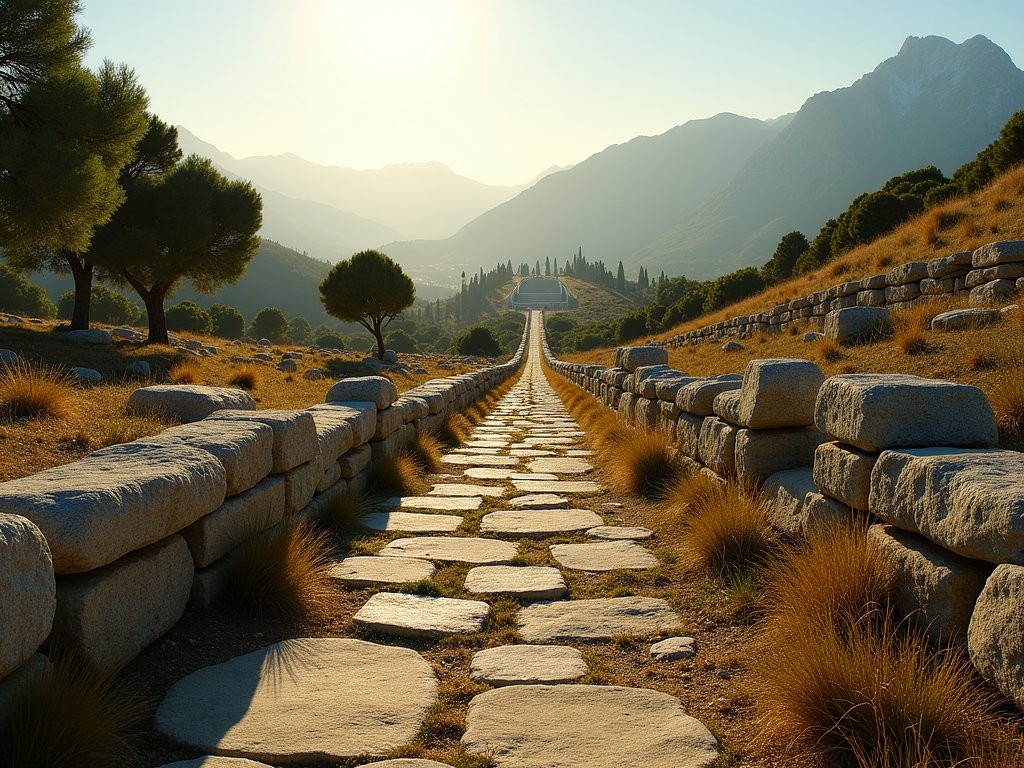
💡 Pro Tips
- Visit the Temple of Apollo area twice—once early morning and again late afternoon for dramatically different lighting and atmosphere
- Bring binoculars to spot details on distant monuments and appreciate the engineering precision
- Read the inscriptions on the Serpent Column replica—they list the Greek cities that united against Persian invasion
Beyond the Sanctuary: The E4 European Long-Distance Path
While most visitors never venture beyond Delphi's archaeological boundary, the truly rewarding hiking begins where the tourist path ends. The E4 European Long-Distance Path—a trail network spanning the continent—passes directly through Delphi, offering spectacular routes for the more adventurous traveler.
My favorite section begins where the ancient stadium (the highest point of the archaeological site) ends. Look for the discrete red and yellow E4 markers that guide you further up Mount Parnassus. Within 20 minutes of leaving the archaeological site behind, you'll find yourself in a different world—one of pine forests, mountain herbs, and panoramic vistas that few tourists ever experience.
The path to Corycian Cave makes for an excellent half-day hike (about 3-4 hours round trip). This moderate trail climbs steadily through fragrant pine and fir forests before opening to high meadows dotted with wildflowers in spring. The cave itself, sacred to Pan and the nymphs in ancient times, plunges 60 meters into the mountain—bring a headlamp if you plan to explore beyond its entrance.
For those with more hiking experience and stamina, continuing from the cave toward the summit of Mount Parnassus rewards with increasingly dramatic views. On clear days, you can see all the way to the Gulf of Corinth in one direction and central Greece's mountain ranges in the other.
The trail is generally well-marked but can be challenging in sections. I never hike here without my trekking poles, which provide crucial stability on steep descents and take pressure off my knees.
Wildlife enthusiasts should keep eyes and ears alert—the Parnassus ecosystem supports foxes, wild boars, and over 30 bird species including short-toed eagles and peregrine falcons. Spring hikers will be treated to orchids and other wildflowers that carpet certain sections of the trail.
Remember that weather conditions can change rapidly at higher elevations. Even in spring, temperatures can drop significantly as you climb, and afternoon thunderstorms aren't uncommon. Check the forecast before setting out, and don't hesitate to turn back if conditions deteriorate.
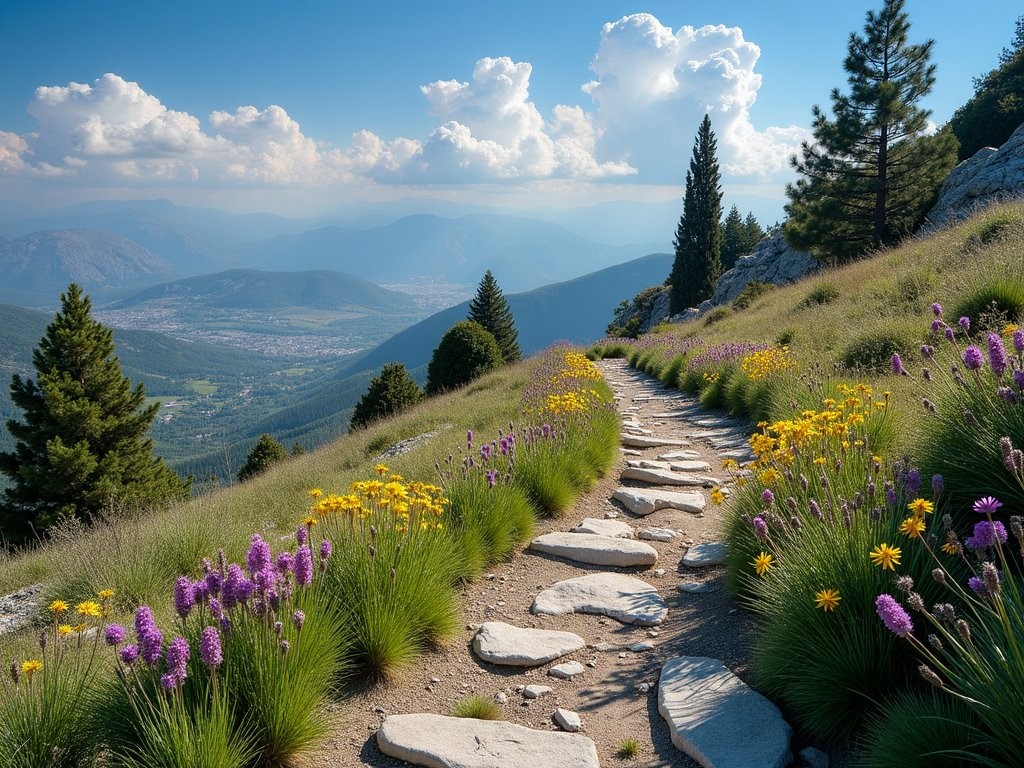
💡 Pro Tips
- Register your hiking plans with your accommodation host before setting off on longer trails
- The Corycian Cave trail is best hiked in morning hours when temperatures are cooler and visibility is typically better
- Carry a whistle in case of emergency—the mountainous terrain can make cell signals unreliable
The Ancient Footpath to the Port of Kirra
For a completely different Delphi hiking experience that combines history, exercise, and spectacular scenery, consider tracing the ancient pilgrims' route in reverse. The path connecting Delphi to the ancient port of Kirra (modern-day Itea) was once the primary approach for visitors arriving by sea.
This downhill journey of approximately 16 kilometers follows the Pleistos River valley through one of the world's largest olive groves. Some of these gnarled, silver-leafed trees are centuries old, their twisted trunks telling silent stories of generations past.
Begin this hike early in the morning from Delphi town, following signs toward Chrisso village. The initial descent is steep but rewards with increasingly expansive views of the olive-covered valley. After about an hour, you'll reach Chrisso—a traditional Greek village where time seems to move more slowly. The local kafeneio (coffee house) makes a perfect rest stop, where elderly men playing tavli (backgammon) barely look up as hikers pass through.
Beyond Chrisso, the path levels out as it meanders through the UNESCO-protected olive grove. In spring, the ground beneath these ancient trees becomes a canvas of wildflowers—poppies, anemones, and wild orchids create splashes of color against the silver-green backdrop.
What makes this hike particularly special is its historical significance. As you walk, you're literally following in the footsteps of ancient pilgrims who made the journey upward to consult the Oracle. Merchants, messengers, and even military contingents would have traveled this route between sea and sanctuary.
After approximately 4-5 hours of hiking (including rest stops), you'll reach the coastal town of Itea. While little remains of the ancient port of Kirra, the satisfaction of completing this historical route—and the opportunity to cool tired feet in the Gulf of Corinth—makes for a perfect day's adventure.
This one-way hike requires some planning. Either arrange a taxi pickup from Itea back to Delphi (about €25-30) or check the local KTEL bus schedule, which offers limited service between the towns. Alternatively, some accommodating hotel owners in Delphi may be willing to pick you up if arranged in advance.
Don't attempt this hike without sun protection and plenty of water, particularly from late morning onward when shade becomes scarce in the olive groves. My hydration backpack has been invaluable on this route, allowing me to sip water continuously without stopping to remove my pack.

💡 Pro Tips
- Start this hike no later than 9:00 AM to avoid the afternoon heat, especially if hiking between April and October
- Take a small bottle of olive oil from Delphi to sample with bread along the way—it's produced from the very trees you'll walk through
- The path can be rocky in sections, so proper footwear is essential despite the relatively gentle grade
Spiritual Dimensions: Connecting with Delphi's Ancient Energy
Beyond the physical challenge and historical significance, hiking in Delphi offers something more intangible—a connection to what the ancients considered one of Earth's most spiritually charged landscapes. Even the most skeptical visitors often report feeling something special in this place where heaven and earth were thought to converse.
As someone who's hiked sacred sites worldwide, from Machu Picchu to Japan's Kumano Kodo, I find Delphi uniquely powerful in its combination of natural beauty and mythological significance. The ancient Greeks didn't choose this location randomly—they recognized something in the land itself that modern visitors can still sense if they approach with openness.
One of my favorite contemplative hikes begins at dawn from the Castalian Spring, where ancient pilgrims ritually purified themselves before approaching the Oracle. Follow the path upward toward the sanctuary but veer left onto the less-traveled trail that skirts the ancient gymnasium. This path eventually connects to sections of the ancient Pythian Way, offering solitude even during peak tourist season.
Find a quiet spot with a view—perhaps beneath one of the ancient olive trees that dot the landscape—and take time for reflection. Many visitors bring journals to record their thoughts or questions they might have asked the Oracle. Others practice meditation, finding the rhythmic chirping of cicadas and distant bleating of goat bells creates a natural soundtrack for mindfulness.
For those interested in Delphi's spiritual dimensions, the Corycian Cave mentioned earlier holds special significance. Ancient worshippers left thousands of votive offerings here to Pan, nymphs, and chthonic deities. The cave's cool darkness provides a stark contrast to the sun-drenched landscape outside—a physical representation of the Greek understanding that wisdom comes from both light and shadow.
Whether you consider yourself spiritually inclined or not, I recommend setting aside at least one hour during your visit to simply be still in this landscape. Find a quiet spot away from tour groups, perhaps early morning at the Tholos of Athena Pronaia, where the circular temple's remaining columns create perfect frames for the rising sun. Breathe deeply, listen to the mountain's subtle sounds, and allow yourself to experience what has drawn seekers to this land for millennia.

💡 Pro Tips
- Visit the Castalian Spring early morning or evening when tour buses are gone to appreciate its serene atmosphere
- Bring a journal to record reflections or sketch the landscape—many visitors report unusual clarity of thought here
- If hiking to more remote spots for contemplation, inform someone of your plans and expected return time
Where to Stay and Refuel in Delphi
After a day of hiking Delphi's ancient paths, you'll need comfortable accommodation and hearty Greek cuisine to restore body and spirit. Fortunately, this small mountain town offers options that cater well to solo travelers seeking both comfort and authenticity.
For accommodation, I recommend staying in Delphi town rather than making the mistake many travelers do by day-tripping from Athens. Not only does this allow early access to the archaeological site before tour buses arrive, but it also lets you experience the magical transformation of the landscape at sunset and sunrise.
My personal favorite for mid-range budgets is Hotel Nidimos, a family-run establishment with simple but comfortable rooms, many featuring balconies with spectacular valley views. The proprietor, Dimitris, is a wealth of information about local hiking trails and has been known to pack early breakfasts for guests heading out for sunrise hikes.
Alternatively, Pitho Rooms offers apartment-style accommodations with kitchenettes—perfect for hikers who might want to prepare their own trail snacks or simple evening meals. Their central location puts you within minutes of both trailheads and tavernas.
Speaking of food, Delphi offers several excellent options for refueling after a day on the trails. To Patriko Mas serves traditional Greek cuisine with an emphasis on local mountain ingredients—their lamb kleftiko (slow-cooked with herbs) and wild greens pie make perfect post-hike recovery meals.
For lighter fare and the best people-watching in town, Cafe Melopoleio on the main street offers excellent Greek coffee, fresh pastries, and simple mezze plates on a terrace overlooking the Gulf of Corinth. Their Greek yogurt with local honey and walnuts makes both a perfect breakfast and afternoon energy boost.
Don't miss sampling the local ambrosia—no, not the mythological food of the gods, but Delphi's excellent olive oil produced from the ancient groves you'll hike through. Many restaurants serve it with fresh bread before meals, but you can also purchase bottles to take home at several shops along the main street.
Hikers should note that while Delphi town has several small markets for trail supplies, selection is limited. If you have specific energy bar preferences or specialized hiking snacks, bring these from Athens or larger towns. However, local bakeries offer excellent spanakopita (spinach pie) and tyropita (cheese pie) that make perfect portable trail food when wrapped in paper napkins.

💡 Pro Tips
- Request a room with a valley view—the premium is small but the sunset vistas are priceless
- Many restaurants offer packed lunch options if you ask a day ahead—perfect for longer hikes
- The best local souvenir is a small bottle of Delphi olive oil, which comes from the groves visible below town
Final Thoughts
As I sit on my hotel balcony watching the last light fade over the Gulf of Corinth, my legs pleasantly tired from the day's adventures, I'm struck by how Delphi continues to offer what seekers have found here for millennia: perspective. Whether you've come for the history, the hiking, or something more spiritual, these ancient paths deliver wisdom if you're willing to listen.
Delphi isn't a destination to be rushed. Its magic reveals itself to those who slow down, who venture beyond the main archaeological site, who take the time to follow a mountain path to see what lies around the next bend. For the solo traveler especially, these hills offer not just exercise but companionship—with history, with nature, and perhaps with parts of yourself rediscovered along the way.
When you return home and friends ask about your trip to Greece, you'll find yourself struggling to convey exactly what makes Delphi special. You might show them photographs of sun-drenched ruins or describe the taste of wild oregano crushed underfoot on mountain paths. But in the end, you'll simply tell them they must experience it themselves. After all, that's what the Oracle would have advised.
✨ Key Takeaways
- Arrive early and stay overnight in Delphi town to experience the site without crowds
- Venture beyond the main archaeological site onto the E4 trail for the most rewarding hiking experiences
- Pack proper hiking gear including supportive footwear, sun protection, and plenty of water
- Allow time for quiet contemplation in this spiritually significant landscape
📋 Practical Information
Best Time to Visit
April-June and September-October for ideal hiking weather
Budget Estimate
€80-150 per day including mid-range accommodation, meals, and site entrance fees
Recommended Duration
2-3 days minimum to properly explore the trails
Difficulty Level
Moderate - Trails Range From Easy Archaeological Paths To Challenging Mountain Routes

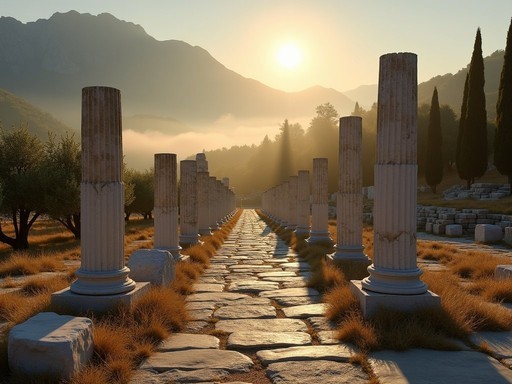
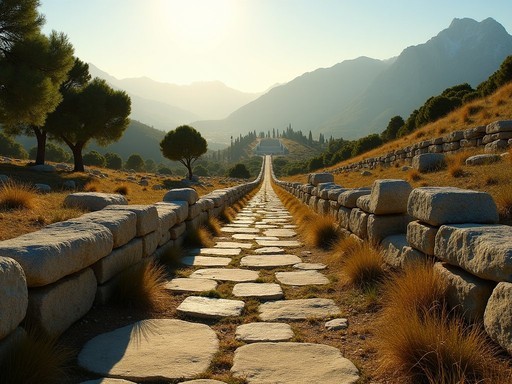

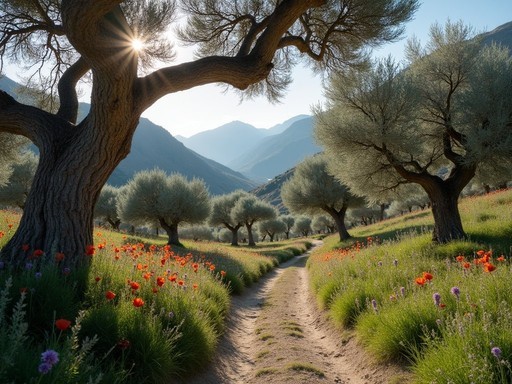
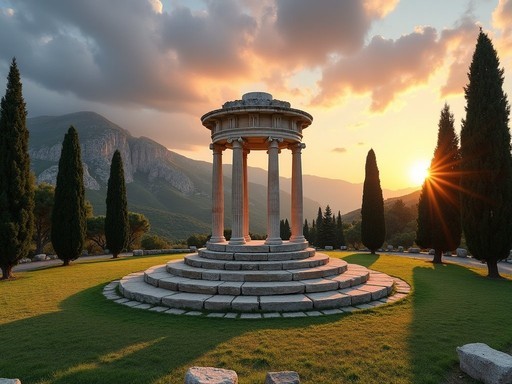



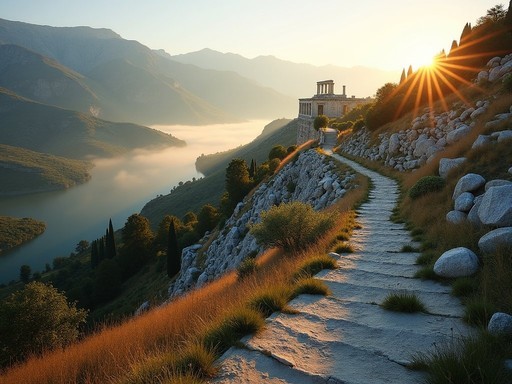







Comments
luckymate
Would November be too cold for these hikes? Or is it actually better without the summer crowds?
Sarah Powell
November can be great actually! Temperatures are mild (around 15°C/60°F), crowds are thin, and the light is beautiful for photos. Just pack layers and check the forecast for rain.
Sarah Powell
I hiked these trails last summer and can confirm they're absolutely magical. One tip I'd add - the section of the E4 path north of the sanctuary gets much less foot traffic but offers some of the most spectacular views of the valley. If you're there during summer like I was, start early (7am) to avoid the midday heat. The local archaeological museum is also worth spending at least 2 hours in after your hike. The bronze Charioteer statue alone is worth the visit. Maria, your description of the morning mist over Mount Parnassus took me right back!
citygal
This looks amazing! How difficult would you say the hike to Kirra is? I'm planning a trip in April and wondering if I should include it in my itinerary.
Maria Green
The Kirra path is moderate - about 3 hours downhill with some rocky sections. Spring is perfect for it! Just bring proper hiking shoes and plenty of water.
citygal
Thanks Maria! That's really helpful. Will definitely pack my hiking boots then!
hikerDude42
Just got back from Delphi last week! Definitely wear proper hiking shoes - those ancient stones get slippery, especially around the theater area. Made that mistake with regular sneakers 🤦♂️
wanderlustnomad
Would November be too cold for these hikes? Planning a trip then!
citygal7922
I did it last November! It was chilly but beautiful - way fewer tourists too.
Maria Green
November can be lovely - crisp air makes for clear views! Just bring layers and check weather forecasts as rain is more likely. The archaeological site is less crowded which is a huge plus.
Megan Martin
Maria, this guide is exactly what I needed! I'm planning a Greece trip for next spring and Delphi is high on my list. I especially appreciated your details about the Ancient Footpath to Kirra - it's not covered in most guidebooks. When I hiked in Meteora last year, I found that starting early morning (around 7am) helped avoid both crowds and the midday heat. Would you recommend the same timing for Delphi trails? Also, how did you find the trail markings? I've heard some Greek hiking paths can be tricky to navigate without a local guide.
Maria Green
Thanks Megan! Early morning is definitely the way to go in Delphi too - I started at 7:30 and had the first hour almost to myself. The archaeological site gets busy after 10am when the tour buses arrive. As for markings, the main site is very well-marked, but the E4 path sections do require more attention. I used hiking app as backup navigation which worked great even with spotty signal.
citygal7922
Those views from Mount Parnassus look incredible! Adding this to my bucket list immediately.
Maria Green
Thanks! The panorama really does take your breath away - both from the climb and the view!
citygal7922
Is it doable for someone with moderate fitness? I'm not exactly a mountain goat 😅
Maria Green
Absolutely! The main archaeological trail is well-maintained with plenty of spots to rest. Just take it slow and bring plenty of water!
beachphotographer
One tip for anyone planning this trip - bring a wide-brimmed hat! There's very little shade on most of these trails, and the Greek sun is no joke, even in spring/fall. Also, the water at the Castalia Spring is so refreshing - bring an empty bottle to fill up there!
Marco Suzuki
Excellent guide, Maria. I'd add that timing is everything at Delphi. I visited in late September last year and found it to be ideal - the summer crowds had dispersed, temperatures were pleasant (18-25°C), and the light was perfect for photography. The E4 path section you mentioned deserves more attention - it's considerably less crowded than the main archaeological site and offers some truly spectacular vantage points. I'd recommend bringing proper hiking boots though, as some sections get quite rocky. I used my trekking poles which were invaluable on the descent to Kirra. Also worth noting: the museum at Delphi is exceptional and provides crucial context for the site - don't skip it!
Maria Green
Thanks Marco! Great point about September being ideal - I completely agree about the museum too. It really brings the whole site to life when you understand the artifacts in context.
sunnyguy
Those sunset photos from your hotel are incredible! Added to my bucket list!
Venture X
Premium card with 2X miles, $300 travel credit, Priority Pass